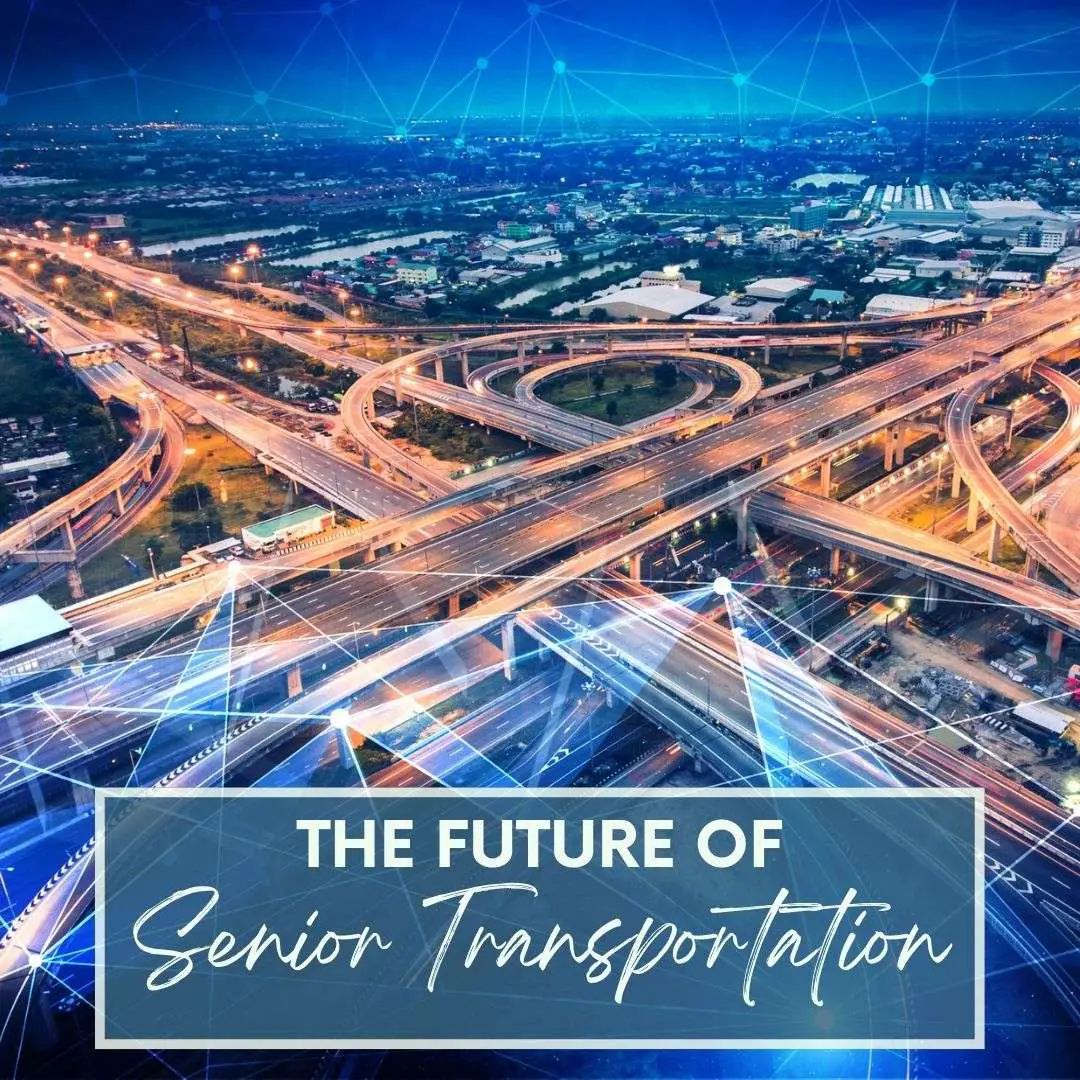For seniors, transportation is an important method for seeing family members and getting necessary supplies such as medication delivered. Transportation is an Aging in Place Technology. During the pandemic, delivery drones have proved an especially useful tool for contactless delivery of essential items.
The world is evolving fast, and there are big changes coming to our roads, seas, and skies. Future transportation will change the way we travel and transport goods. Some future transportation hopes to allow us to travel farther distances in a shorter time, whereas others encourage us to travel less and walk more.
While many of these new innovations still have big questions to answer around legality and regulation, the goal is to make transportation more efficient, safer, and seamless.
Read on to discover some of the key future transportation methods for both transportation and delivery plus mitigating some of the challenges many seniors have with transportation.
App Assistants for Seniors – Transportation and More
Companies such as Uber and Lyft have revolutionized transportation with the touch of a button. However, this revolution has left aging residents behind as it requires a smartphone to operate.
Enter app assistants, such as Go Go Grandparent, designed specifically for senior use–no smartphone required. Now, you can get access to all that the apps have to offer: rides, grocery, and food deliveries, and more. All you have to do is call in and request a service.
For grocery deliveries, you’ll get access to top companies such as Instacart, Walmart, Postmates, Shipt, and more. For rides, you can book travel through transportation companies such as Uber and Lyft.
You can also manage medication delivery and scheduling requests, all using a traditional phone line!
Transportation apps, in addition to some of the solutions below, can help to keep people connected and thereby combat loneliness.
Micromobility
One great way to stay active and take advantage of future transportation is to use micromobility! Cities across the country are investing in technology such as dockless bikes and shared scooters.
While scooters pose more of a danger to its riders, biking is an excellent way for seniors to stay active and explore the community. Micromobility is also a great eco-friendly option for travel as it reduces fossil fuel consumption.
Self-Driving Cars and Trucks
Contactless delivery is a term we’ve all been hearing a lot the past few months. Eliminating human interaction from delivery helps slow the spread of viruses such as the novel coronavirus. Driverless cars, trucks, and ships allow goods and supplies to be transported efficiently and safely, with less fear of transmission.
While self-driving vehicles may seem light-years away, there are already semi-autonomous vehicles on the road. Major manufacturers such as Tesla, Audi, Uber, and Volkswagen are investing big in this technology.
Self-driving vehicles do pose ethical questions, which have caused some companies (such as Google) to abandon their production. For example, if a self-driving car is about to crash, should it try to save the driver or a nearby pedestrian?
Insurance is another looming obstacle for these vehicle manufacturers to tackle. After all, who is responsible if a self-driving car crashes: the driver or the manufacturer?
Delivery Drones
Another contactless delivery method looming on the horizon is delivery drones. In fact, Amazon may begin flying its fleet of octocopters soon.
Rather than having delivery drivers drop packages off at your door, drones complete the last mile of delivery by dropping off mail from the sky.
While these devices faced years of regulatory challenges in the U.S., the FAA has been warming up to the idea, and COVID-19 likely sped up mass commercial approval even quicker. Retail companies such as Amazon and Walmart are investing heavily in this technology, applying for hundreds of patents to streamline their drone delivery processes.
There are concerns around privacy and security when it comes to delivery drones in consumer neighborhoods. Noise pollution will also likely occur.
Maglev Trains
The future of railroads is magnetic–at least, it should be. Maglev trains can reach speeds of up to 400 miles per hour, use about 30% less energy than typical railways, and are much quieter. These trains can make getting home for the holiday’s fast and easy, without having to hop on a plane!
So how do maglev trains work, exactly? They use magnetism and electromagnetism to levitate the train and propel it forward.
Asian countries such as Japan already have maglev trains in operation, but the U.S. is still figuring out how to fund these initiatives and recently halted its first maglev train production that was slated to run between Baltimore and Washington D.C.
The reason these trains come with such a big price tag is that they require completely new railroad tracks to operate. The new maglev line proposed from Tokyo to Osaka for the 2021 Olympic Games has a 49 billion dollar price tag.
Air Taxis
Flying taxis, also known as air taxis, hope to revolutionize air transportation. Currently, more than 20 companies are racing to get cost-effective aerial rides on the market.
Rather than flying out of major airports, these air taxis would take advantage of the web of smaller airports that already exist in cities across the U.S. today to complete inner-city flights in record time.
If your children live just a few cities away, this could cut their travel time in half. One proposal estimated that an air taxi ride from Manhattan to Kennedy International Airport could cost as little as $70 per traveler!
Smart Roads
It’s not only our transportation that is getting smarter: our roads are getting smarter too. Smart roads will use IoT sensors to alert drivers of crash data and weather nearby.
The updates will come in real-time, making driving on the roads safer and more efficient. These smart roads do come with a high price tag though: they will cost about twice as much as conventional roads to install and operate.




